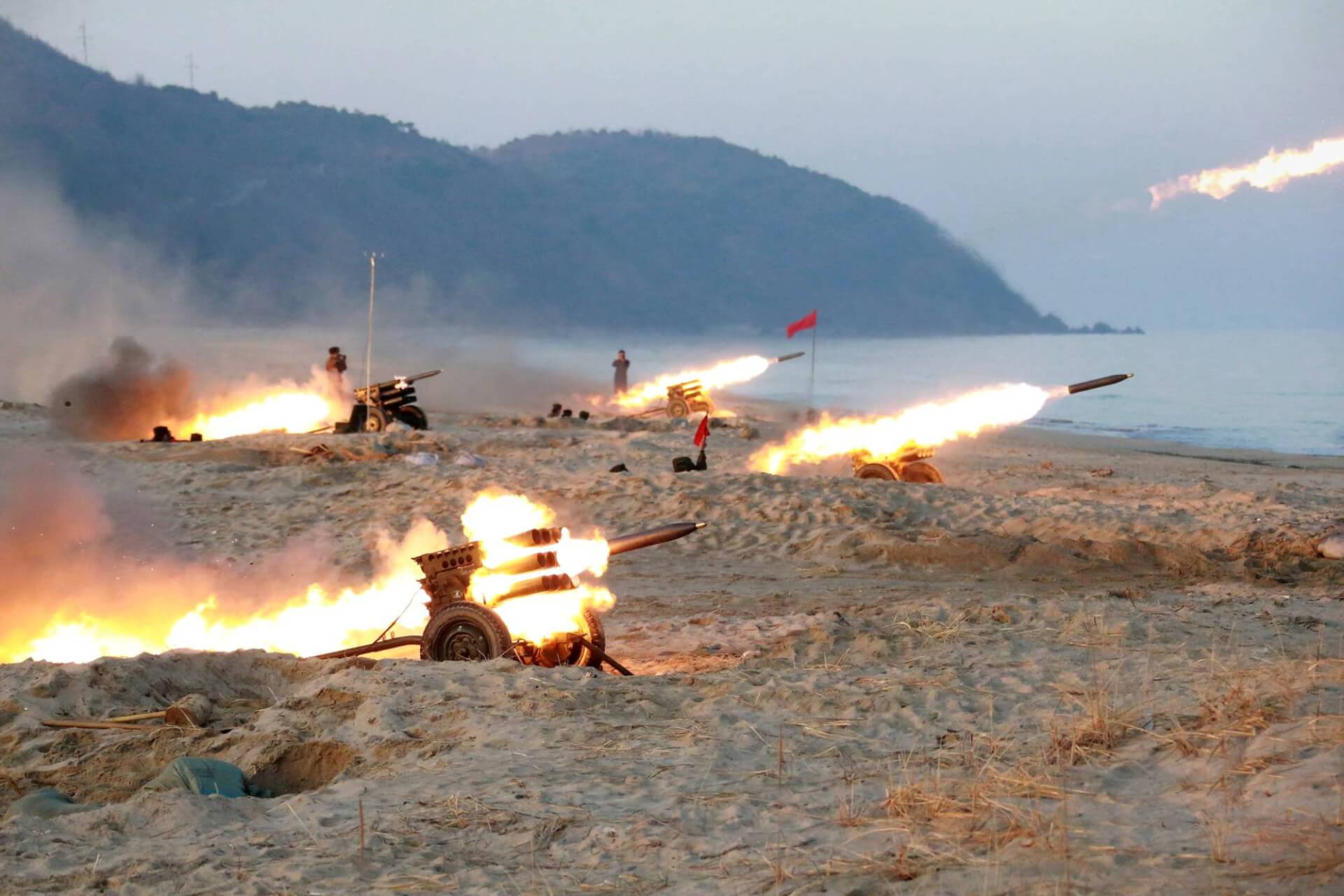North Korea fired artillery rounds into its buffer zone with South Korea late on Tuesday night, warning that it served as a “grave warning” in the face of Seoul’s ongoing artillery training drills.
Seoul’s Joint Chiefs of Staff (JCS) reported on Wednesday that Pyongyang had fired around 100 artillery rounds into the Yellow Sea at around 10 pm on Tuesday and another 150 rounds into the East Sea at 11 pm. The secretive regime launched an additional 100 rounds on midday Wednesday.
While the artillery shells did not hit South Korean territory, they landed in the eastern and western buffer zones, north of the Northern Limit Line, which is the de facto inter-Korean maritime border agreed upon as part of the two countries’ 2018 Comprehensive Military Agreement (CMA).
The JCS in a statement said the firing was “a clear violation of the September 19 military agreement.” It “strongly” urged North Korea to “immediately halt” its “continued provocations,” as such actions “undermine peace and stability of the Korean Peninsula and the international community.”
A spokesperson for the North Korean People’s Army (KPA) said on Wednesday that the firing aimed to send a “grave warning” to South Korea in response to its own artillery training that it allegedly carried out in its eastern border region on Tuesday. Although Seoul has not confirmed conducting any such firings, its ongoing Hoguk drills, which are scheduled to end this Saturday, are the latest in a series of military exercises it has conducted in recent weeks, including joint training exercises with the United States (US) and Japan.
Full KCNA report on North Korea's latest artillery launch: pic.twitter.com/fc01PDW6OF
— William Gallo (@GalloVOA) October 18, 2022
To this end, the KPA spokesperson noted that the “situation” on the Korean peninsula is “getting worse due to the enemies’ repeated military provocations.” It added that “the enemy’s” Hoguk 22 “war drill against the North” is being carried out “in a frantic manner,” and that it had taken “a specially serious note of [Seoul’s] provocative moves.”
“In order to send a serious warning once again, it made sure that KPA units on the east and west fronts conducted a threatening, warning fire toward the east and west seas in the night of October 18, as a powerful military countermeasure,” it stated. The KPA also called on Seoul to “immediately stop the reckless and inciting provocations,” arguing that its southern neighbour is responsible for “escalating the military tension in the forefront area.”
Commenting on the North’s latest act of provocation, Vedant Patel, the principal deputy spokesperson for the US State Department, said during his daily press briefing on Tuesday that “we’ve seen this happen over the course of this week” and that the White House is “aware of these reports.”
Patel called on North Korea “to cease all provocative and threatening actions,” and reiterated, “We continue to believe and be open to dialogue without preconditions with the DPRK as it relates to our ultimate goal here, which is the complete denuclearisation of the Korean Peninsula.”
The North Korean army issued a statement calling the artillery fire a "warning" against ROK military drills that kicked off Monday, and a “military response” to what it alleged was South Korea's test of "tens of multiple rocket launchers” on Tuesday.
— NK NEWS (@nknewsorg) October 18, 2022
The latest incident came only four days after Pyongyang fired hundreds of artillery shells into the military buffer zones. It also launched yet another short-range ballistic missile (SRBM) and flew warplanes near the border with South Korea, prompting Seoul’s air force to scramble its F-35A stealth fighters and other assets. However, no clashes were reported between the two countries.
South Korean President Yoon Suk-yeol criticised North Korea’s “indiscriminate” provocations and echoed previous claims that Seoul has significant retaliatory capabilities to deter an actual assault by Pyongyang to some extent.
“The decision to attack can’t be made without a willingness to risk a brutal outcome,” Yoon told reporters last week. “The massive punishment and retaliation strategy, which is the final step of our three-axis strategy, would be a considerable psychological and social deterrence (for the North),” he warned.
Yoon has also imposed unilateral sanctions on North Korea for the first time in five years. The blacklist includes 15 North Korean individuals at shipping firms and 16 institutions involved in the procurement of supplies for weapons of mass destruction. Seoul’s last sanctions on the country came in 2017, in response to Pyongyang’s sixth nuclear test.
Last week’s test marked North Korea’s 15th missile launch since it resumed its testing activities in late September. In recent weeks, the North has conducted a record-breaking flurry of tests, including an intermediate-range ballistic missile (IRBM) over Japan earlier this month.

